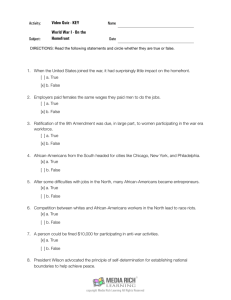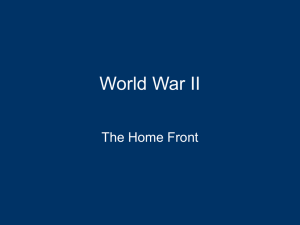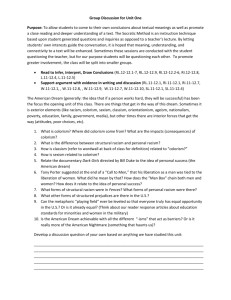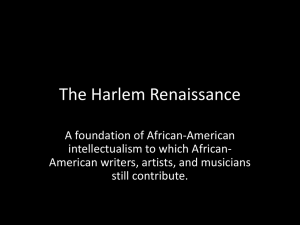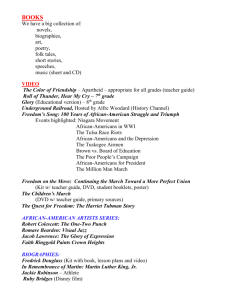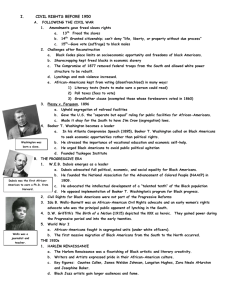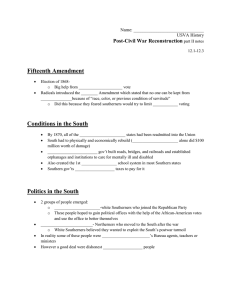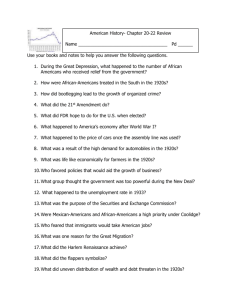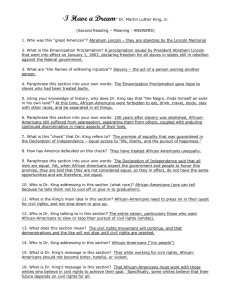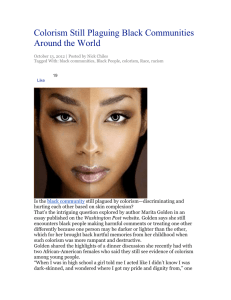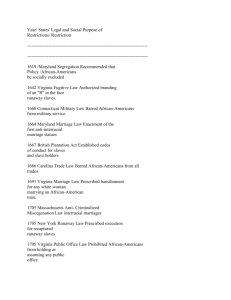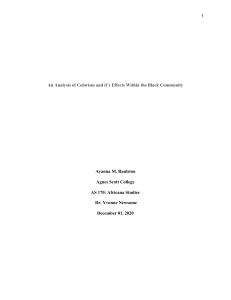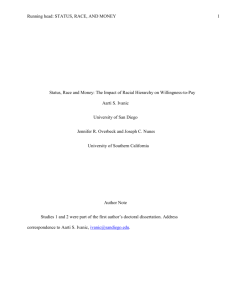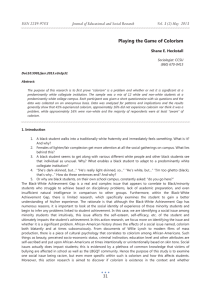Black Is Black Ain't
advertisement
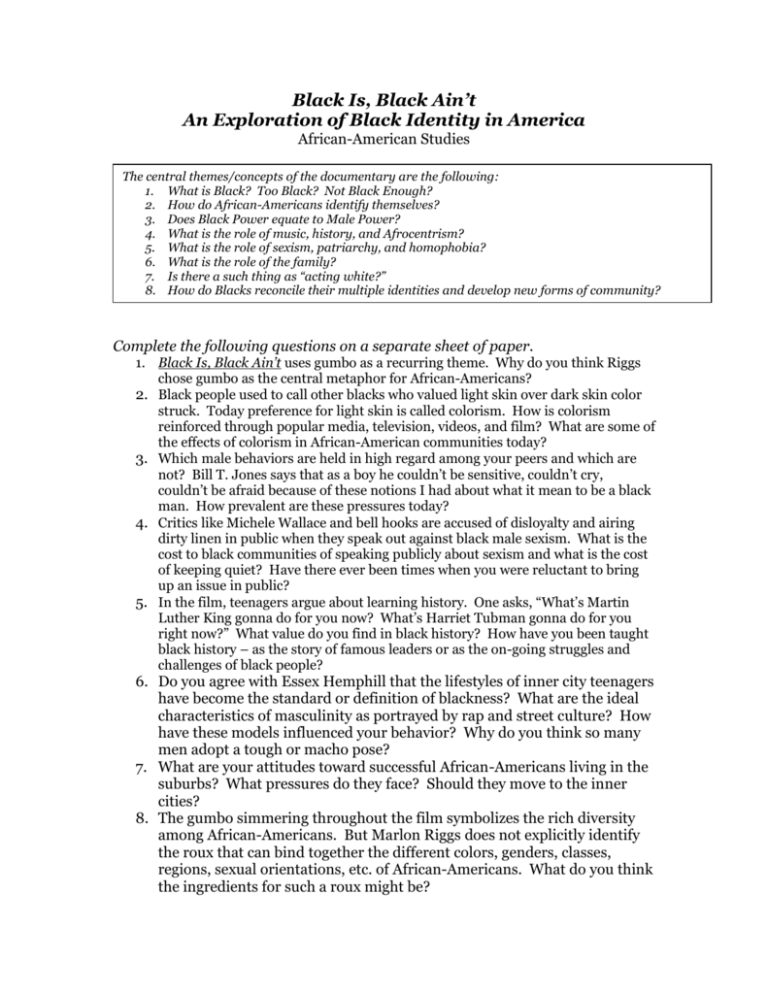
Black Is, Black Ain’t An Exploration of Black Identity in America African-American Studies The central themes/concepts of the documentary are the following: 1. What is Black? Too Black? Not Black Enough? 2. How do African-Americans identify themselves? 3. Does Black Power equate to Male Power? 4. What is the role of music, history, and Afrocentrism? 5. What is the role of sexism, patriarchy, and homophobia? 6. What is the role of the family? 7. Is there a such thing as “acting white?” 8. How do Blacks reconcile their multiple identities and develop new forms of community? Complete the following questions on a separate sheet of paper. 1. Black Is, Black Ain’t uses gumbo as a recurring theme. Why do you think Riggs chose gumbo as the central metaphor for African-Americans? 2. Black people used to call other blacks who valued light skin over dark skin color struck. Today preference for light skin is called colorism. How is colorism reinforced through popular media, television, videos, and film? What are some of the effects of colorism in African-American communities today? 3. Which male behaviors are held in high regard among your peers and which are not? Bill T. Jones says that as a boy he couldn’t be sensitive, couldn’t cry, couldn’t be afraid because of these notions I had about what it mean to be a black man. How prevalent are these pressures today? 4. Critics like Michele Wallace and bell hooks are accused of disloyalty and airing dirty linen in public when they speak out against black male sexism. What is the cost to black communities of speaking publicly about sexism and what is the cost of keeping quiet? Have there ever been times when you were reluctant to bring up an issue in public? 5. In the film, teenagers argue about learning history. One asks, “What’s Martin Luther King gonna do for you now? What’s Harriet Tubman gonna do for you right now?” What value do you find in black history? How have you been taught black history – as the story of famous leaders or as the on-going struggles and challenges of black people? 6. Do you agree with Essex Hemphill that the lifestyles of inner city teenagers have become the standard or definition of blackness? What are the ideal characteristics of masculinity as portrayed by rap and street culture? How have these models influenced your behavior? Why do you think so many men adopt a tough or macho pose? 7. What are your attitudes toward successful African-Americans living in the suburbs? What pressures do they face? Should they move to the inner cities? 8. The gumbo simmering throughout the film symbolizes the rich diversity among African-Americans. But Marlon Riggs does not explicitly identify the roux that can bind together the different colors, genders, classes, regions, sexual orientations, etc. of African-Americans. What do you think the ingredients for such a roux might be?
